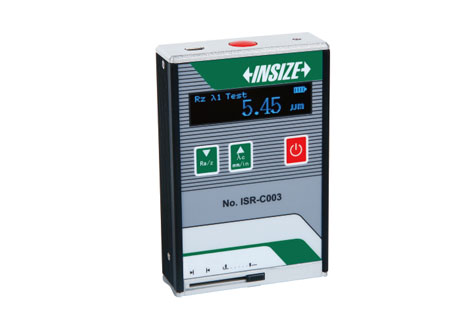roughness tester
Roughness Tester – Reliable Surface Analysis for Industrial Standards
A Roughness Tester is a precision measuring instrument designed to assess the micro-geometric surface texture of a material. It evaluates how rough or smooth a surface is by quantifying variations in height and texture through surface profile parameters such as Ra, Rz, Rq, and Rt.
These instruments play a vital role in quality assurance, production control, and research laboratories, where the surface finish directly affects performance, wear resistance, and aesthetic value of the final product. Modern models feature digital LCDs or touchscreens, high-speed processors, USB/Bluetooth output, and easy data storage for efficient workflow.
Key Features of Roughness Tester
High Precision Measurement
Provides accurate surface roughness data for various materials.
Multiple Roughness Parameters
Supports a wide range of surface roughness parameters (Ra, Rz, etc.).
Easy-to-Read Display
Clear digital display for quick and precise results.
Portable & User-Friendly
Compact design for easy on-site use and simple operation.
Applications of Roughness Tester
Roughness Testers are used across a wide variety of industries, including:
- Automobile Engine & Transmission Components
- Aerospace Precision Parts
- CNC Machining Operations
- Steel & Metal Fabrication
- Medical Implants & Devices
- Tool Manufacturing & Regrinding
- Research and Educational Labs
These testers help manufacturers comply with ISO 4287, JIS, and DIN roughness standards by measuring tiny variations that are often invisible to the naked eye.
How to Use a Roughness Tester
- Surface Preparation: Wipe off any debris, oil, or dust.
- Power On the Device: Activate the tester and choose your surface parameter (e.g., Ra or Rz).
- Probe Placement: Place the stylus gently at the measurement start point.
- Measurement: The probe moves along the surface to scan the profile.
- Result Display: Surface data is displayed instantly on the screen.
- Data Handling: Export or print results via USB, Bluetooth, or built-in printer.
- Evaluation: Match the values against standard surface tolerance limits.
Technical Specifications
| Feature | Details |
|---|---|
| Measuring Range | 0.005 µm to 160 µm (model-dependent) |
| Measurement Parameters | Ra, Rz, Rq, Rt, Rp, Rv, Rmax, etc. |
| Accuracy | ±5% of reading or better |
| Display Type | LCD / Touchscreen with backlight |
| Calibration | Auto / Manual with reference standards |
| Stylus Tip | Diamond Tip, 2 μm Radius, 90° Angle |
| Output Options | USB, RS-232, Bluetooth (optional) |
| Material Compatibility | Metals, Plastics, Ceramics |
| Power Source | Rechargeable Lithium Battery / AC Adapter |
| Housing | High-durability ABS or Aluminum Alloy |





